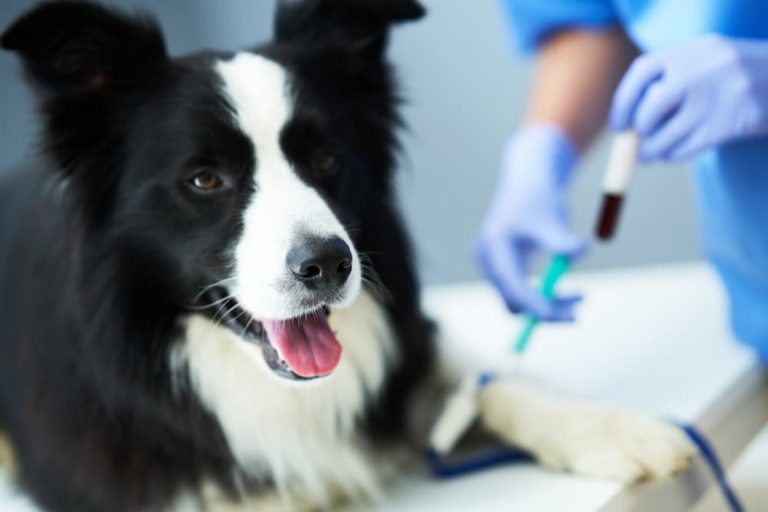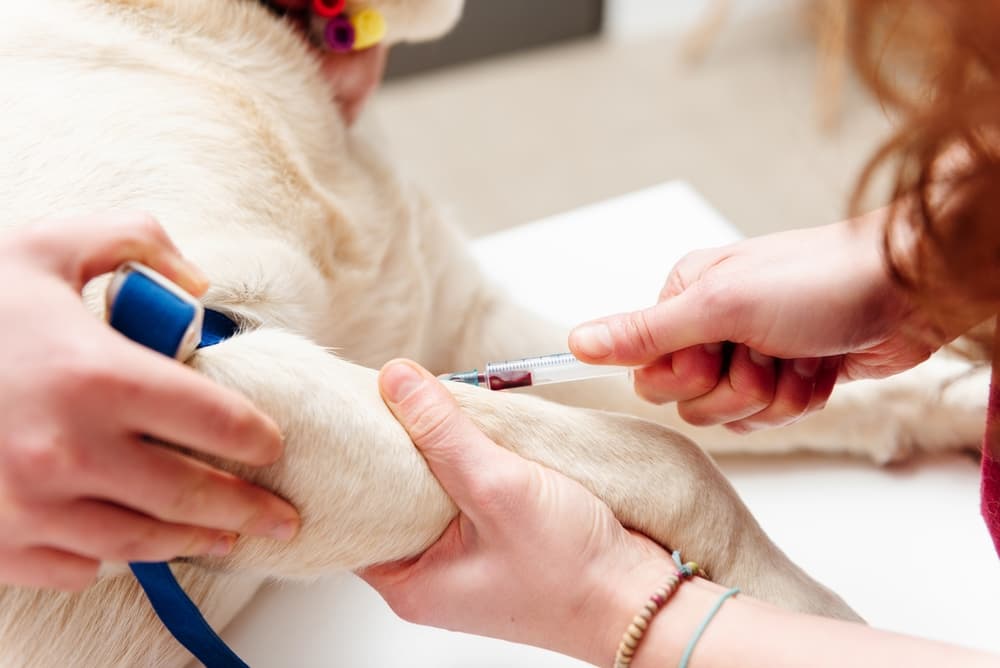Glucose Curve for Dogs: What to Expect

Diabetes (diabetes mellitus) is a serious disease. While it is common knowledge that diabetes means high blood sugar, few people without first hand experience realize how dangerous diabetes is or how much work is required to achieve and maintain normal blood sugar levels.
Most dogs with diabetes require insulin injections every 12 hours. Unlike in diabetic people, we do not try to achieve normal blood sugar levels (70-130) in dogs. Rather, the goal is to keep blood sugar levels below harmful amounts (as high as upper 200s depending on the pet) while also preventing hypoglycemic episodes. While there are several reasons behind this more conservative use of insulin in dogs, the dangers of low blood sugar are among the most serious. Low blood sugar can quickly cause seizures, coma, and death.
Since both high and low blood sugar levels are dangerous, your veterinarian will want to regularly measure the effects of your dog’s insulin dose on their blood sugar to make sure it neither drops too low nor stays too high. A glucose curve for dogs is a day-long procedure that can help veterinarians understand your dog’s response to insulin. The results of the glucose curve are used to assess and improve control of your dog’s diabetes and are a very important part of diabetes management for dogs.
What is a Glucose Curve for Dogs?
A glucose curve for a diabetic dog is a series of blood sugar (blood glucose or BG) measurements starting before a meal and insulin dose and repeated throughout a 12 or 24 hour period. Blood glucose is measured every 1-2 hours. The goal is to determine how well the dog is responding to the current dose of insulin.
In a typical curve the blood glucose will immediately go up after a meal then decrease as the insulin takes effect. Then as the insulin wears off again the blood glucose will rise until the next meal and insulin dose. The exact pattern or shape of this curve depends on the type of insulin, the dose, and how well the individual dog responds to insulin. Your veterinarian uses the information obtained in a glucose curve to adjust insulin levels and make other recommendations such as dietary changes. It is very important not to change your dog’s insulin dose without consulting your veterinarian first.
Most of the time a glucose curve is performed in your veterinarian’s clinic. However, some pet parents are comfortable performing blood glucose sampling at home with a small hand-held unit (glucometer) very similar to the ones human diabetics use. Glucometers are relatively inexpensive and readily available ($50-$100 plus refill test strips). The procedure is the same, with blood sampling every 1-2 hours. Pet parents send the results to their veterinarian after the full curve has been collected. The veterinarian then interprets the glucose curve and recommends changes to the insulin dose if necessary.
Although insulin is used commonly it is a very dangerous drug. Too much insulin can lead to low blood sugar which can cause collapse, seizures, and even death. Too little insulin and it will be ineffective, putting dogs at risk for abnormal metabolism which can also be fatal if untreated. This is why it is very important to regularly perform glucose curve tests to make sure a dog’s insulin dose is effective.
Continuous Glucose Monitoring for Dogs
Until recently, each measurement of blood glucose required drawing blood and immediately testing it in either a hand-held glucose monitor designed for canine blood samples or in a large blood analyzer found in most veterinary clinics.
In the past few years continuous glucose monitors have become available for dogs. Continuous glucose monitors are flat, golf-ball sized patches that are adhered to an area of a dog’s skin. Glucose levels can be read with a hand-held scanner or phone app as frequently as is required for up to 2 weeks. Though these have the advantage of being less invasive, they may not be as accurate as blood glucose testing. The device can be expensive, up to $300 per monitor. The scanner can be purchased and reused for future glucose curves or may be rented from your veterinarian.
Blood Glucose Curve for Dogs: What to Expect

A glucose curve is a scheduled procedure with your veterinarian. It is important that your dog have a fairly typical day the day before. This means they should eat at their normal times, have their normal walks and other activities, and receive their prescribed dose of insulin. If your dog does not eat, vomits or has diarrhea, misses an insulin dose, or shows any signs of illness call your veterinarian to reschedule the glucose curve. Your veterinarian may still want to see your pet to determine the cause of their illness. But since illness affects metabolism and blood glucose levels the glucose curve should be postponed if your dog is sick.
On the day of the glucose curve your veterinarian will have you withhold food and insulin until you are at the clinic and baseline blood glucose is assessed. If your dog will not eat at the veterinary clinic or there are other extenuating circumstances, your veterinarian may instruct you to feed and administer insulin before arrival at the clinic. Otherwise, bring your dog’s breakfast and insulin with you. You should prepare to spend about 1 hour at the veterinary clinic in the morning. After breakfast your dog will remain at the clinic for 12 or 24 hours.
Small blood samples are taken every 1-2 hours to measure glucose concentration in blood. Some veterinarians will place an IV catheter and draw blood from it while others will use very small needles to draw blood samples from the paw or ear. The specifics will depend on many factors including your dog’s overall health, any other illnesses, and veterinarian preference.
When the glucose curve is completed you can pick up your dog and return to a normal eating and dosing schedule. Your veterinarian will call you within several days of the glucose curve to discuss the results and make any recommendations.
If your dog’s insulin schedule is not morning and evening, for example if you work non-standard hours and dose insulin at 2pm and 2am, then your veterinarian will likely recommend either a continuous glucose monitor for home testing or having a glucose curve performed at a 24-hour veterinary facility that is able to accommodate your dog’s insulin schedule.
Glucose curves will need to be repeated at least every 6 months for dogs with well-controlled diabetes. If changes are made to your dog’s insulin dose after a glucose curve your veterinarian will want to repeat the glucose curve at this new dose in 2-4 weeks.
How Much Does a Glucose Curve Cost?
The cost of a glucose curve will vary between veterinarians and also based on the length of the curve (12 vs 24 hours) and type of sampling (blood collection vs continuous monitor). A range from $150 to $500 is average, although some glucose curves may cost more.
Performing a Dog Glucose Curve at Home: What to Know
If you and your veterinarian are comfortable with it, it is possible to perform a glucose curve at home. This can be especially useful for dogs who are very fearful or uncooperative at the veterinarian’s office. The procedure is the same, with sampling every 1 or 2 hours for 12 or 24 hours. A glucose curve can also be collected at home after a continuous glucose monitor is placed on your dog by the veterinarian. In either case, you send the numbers to your veterinarian for analysis.
Even if you perform a glucose curve at home, do not make changes to your dog’s insulin dose unless instructed by your veterinarian. While the blood glucose measurements you collected are important in determining whether changes need to be made, there are other factors involved as well including your pet’s other health challenges, health history, method of sample collection, and type of insulin your dog is on.
Dog Blood Glucose Curve Results: What They Mean

The results of your dog’s glucose curve tell your veterinarian how well their diabetes is controlled. If all of the numbers are too high that means that your dog may need more insulin, a different type of insulin, or to have other changes made in their lifestyle such as diet type or changes to other medications. An inconsistent curve, or one where the lowest number is too low, could mean that your dog is getting too much insulin.
Diabetes is a very complex disease because of all of the ways blood glucose levels influence overall metabolism in the body. Regularly assessing blood glucose curves helps your veterinarian make sure your dog stays healthy despite their diabetes.









